
The production of a good coffee is characterised by the set of stages and processes that result in the most consumed beverage by many in their daily lives. The coffee process is complex but like everything else, it requires a great deal of dedication to obtain favourable results.

The coffee tree, which is the plant from which coffee is produced, requires an important care in its cultivation and with the processes that are applied to it, which are an important part in order to have that cup of coffee that we all want.
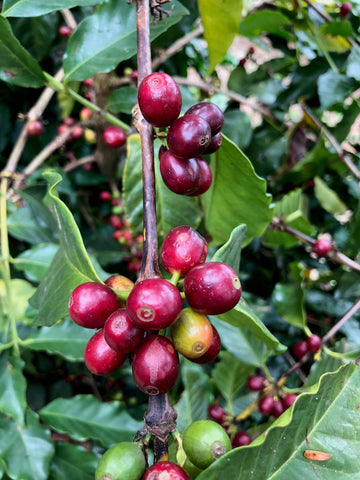
+ Wet Processed Coffee
The processing of wet or washed coffee consists of removing all the pulp from the coffee seeds before drying them.
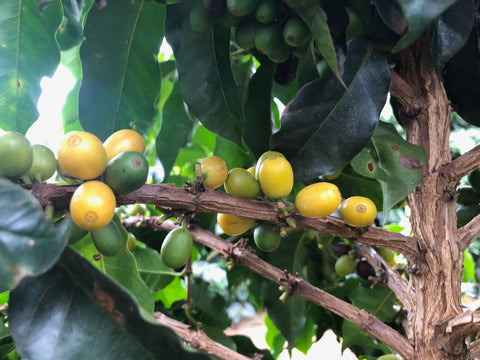
Once the coffee fruits (also known as cherries or drupes) have been harvested, a "pulping" machine is used to eliminate the skin and pulp from the fruit. The seed is then transferred to a container with clean water and this is fermented eliminating the rest of the pulp, but if it is left too long in the soaking it runs the risk of acquiring unpleasant flavours such as those of natural processed coffee.
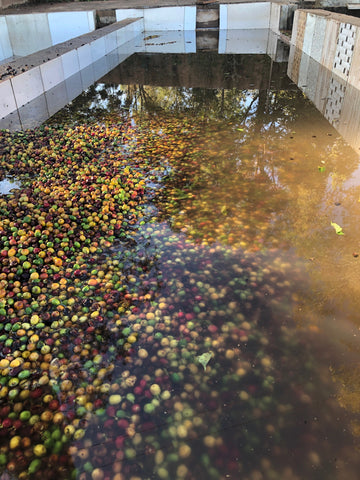
Once the parchment and pulp have been removed from the interior of the coffee, the beans are finally dried either by sunlight by turning them over with large rakes, or with large rotating cylinders heated in mechanical dryers, to ensure that the drying process is complete, in order to achieve a final humidity of 10-11%.
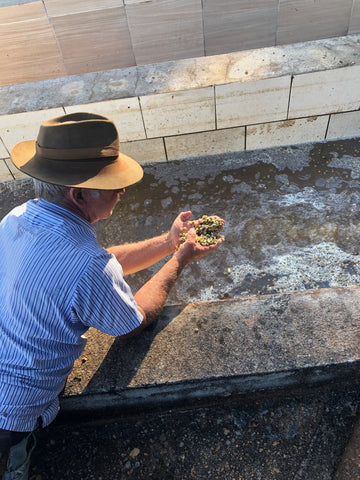
Flavour profile of washed coffee
Wet processing produces a clean flavour and produces acidity, which is one of the basic flavour characteristics along with body, aroma, sweetness and bitter flavours. The amount of acidity can affect the brightness of coffee, this acid can be negative or positive depending on the person, it can cause acid reflux or stomach discomfort depending on the increase and concentrations of healthy organic acids.

Normal digestive systems, on the other hand, handle these healthy acids well.
In wet processing the coffee loses much of its body, achieves a greater completeness and a cleaner taste, proving the absence of undesirable flavours.
+ Natural processed coffee
The natural or dry processing originating in Ethiopia, is a method commonly known for its antiquity, after harvesting the fruit these are placed in a silo-dryer "Cenicafé" this allows it to dry uniformly due to the space from the floor to the table allowing greater ventilation, other coffee growers spread the fruit on floors prepared for drying in the sun and is turned over with large rakes to avoid fermentation, mould and rotting during drying. Then, once the drying process is finished, the skin is mechanically removed in order to store the unprocessed green coffee.

This method of processing is considered to be quite ecological and less elaborate due to the few resources necessary to carry it out. This is the one most producers resort to if there is little access to water, and it is considered to be one of the cheapest in the market.
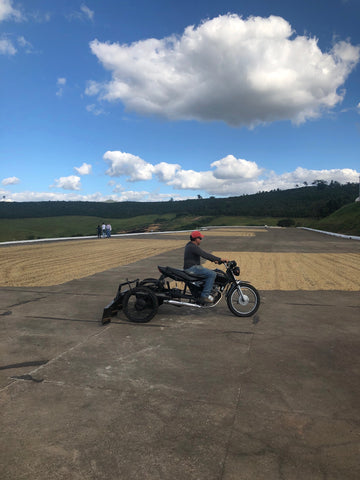
Flavour profile of dry or natural processed coffees
This natural pulping process is carried out in order to highlight the natural sweetness and aromas of the coffee, highlighting the acidity, sweetness and body equal to a dry process but cleaner, creating an inconsistent flavour that generates a massive and cheap consumption.

Processed this way, it can add positive flavours such as fruits but can also add negative "wild" flavours due to the bad ferment in the process.
Honey processing
Honey processing originated in Costa Rica and is now widely used there as well as in other Central American countries.
When processing the fruits (cherry) are pulped as in the wet process even using the same machinery but with adaptations so that it can leave some pulp in the seeds is somewhere between the wet and dry processing, from this arises the variety of honey as it is the black, red and yellow honey, giving a result of caramelization and a darker colour.
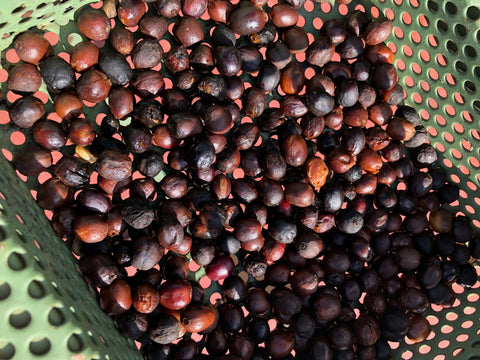
This process gives a sweetness like that of honey or brown sugar in the beverage.
The controlled amount of pulp reduction in the seeds determines the style of honey processing and is divided into 4 subcategories as follows:
-White Honey Coffee: It is similar to the wet process, subtracting 70.5-95% of the mucilage to this process.
-Yellow Honey Coffee: Subtracting 50-75% of the mucilage.
-Red Honey Coffee: Subtracting 25-50% of the mucilage, similar to the natural process, once dry, it obtains and produces a dark tone.
-Black Honey Coffee: Subtracting 0-25% between skin and mucilage.
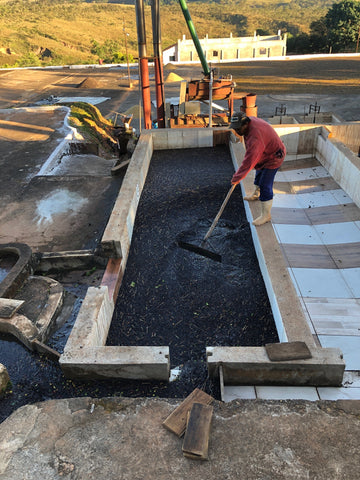
Flavour profile of the honey process
This process is considered one of the best in sweetness and body of a coffee being similar to the natural process but with less risk of defect in negative flavours.
The amount of mucilage influences the sweetness of the beans, the lower the amount of mucilage the less sweetness the beans will have. White and red honey have a mild flavour profile. This style maintains a balance of bean acidity and flavour.
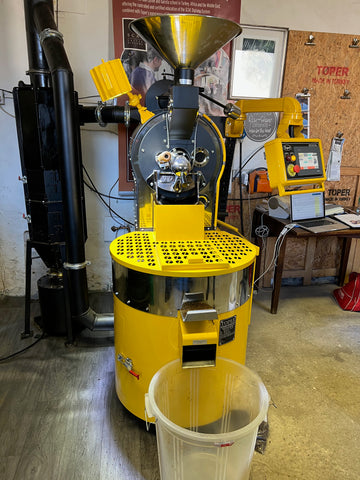
Roasting Process
Each of the processes through which the coffee goes through are important for the roasting step, this roasting is generally carried out in the country of consumption and not in the country of origin. The dry bean is packaged to be transported around the world, the raw green coffee beans are very stable and do not degrade or loose taste over a very long compared - especially when compared to roasted coffee. Generally the green raw coffee is packed in hessian sacks, some plantations will not use a "grain pro" food grade internal sack which protects the beans from moisture - the main enemy of raw green coffee.
The roasting process consists of heating, cooking or drying the beans in a special coffee roaster transforming the green coffee beans into the special flavours and aromas for the final result in the cup.
Roasting eliminates the humidity and changes the chemical composition of the coffee beans through pyrolysis obtaining the brightness, acidity, flavours, and aromas in the prepared coffee.
-Roasting time: It can vary depending on the amount of coffee beans, their humidity and the type of bean. Another factor that can vary is the age of the beans as well as the climate in the place of roasting.
This requires a master roaster who is in charge of paying attention to the time and temperature of roasting and even to the appearance and fragrance in a skilful way.
The common coffee roasting machines are heated with propane gas and use electricity to move the drums where the coffee is roasted. The temperatures handled are from 370 degrees to 540 degrees Fahrenheit (188 degrees to 282 degrees Celsius).
Coffee grinding
The milling process varies in fineness and thickness, and this is generally managed by using more or less time in the mill, once selected and ground, it is left for the packaging process.
How producers decide which process to use
In the production, profitability and good taste are sought, the producer looks for this profitability and taste in the environment that surrounds him. Generally to make this decision, rainy climates are evaluated to decide whether to use washed, honey or natural. Rains, storms and strong winds can split cherries.
The honey process and the natural process are used if it has not rained.
In one lecture it was explained how Gold Mountain uses refractometers to measure sugar on their farm, this helps to know and decide whether to use the natural method or the honey or even the wash.
Written by Aaron Morales
